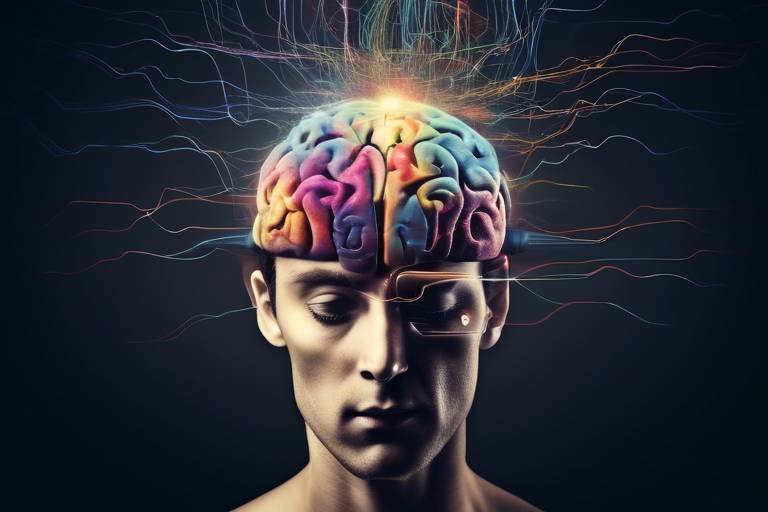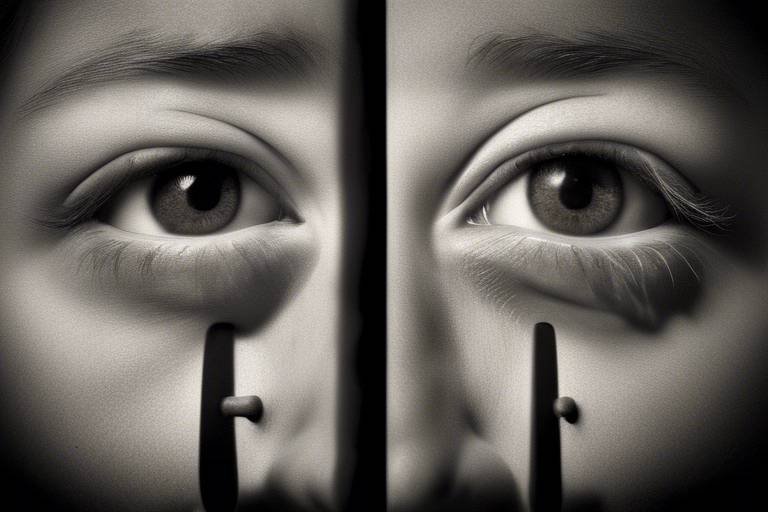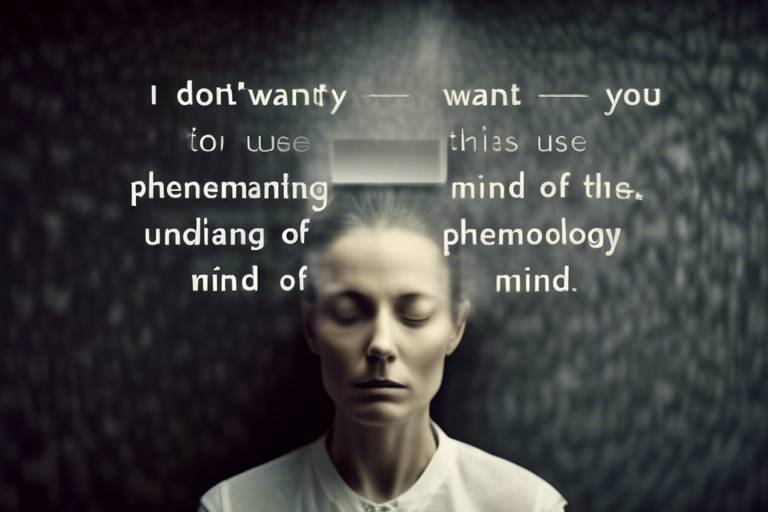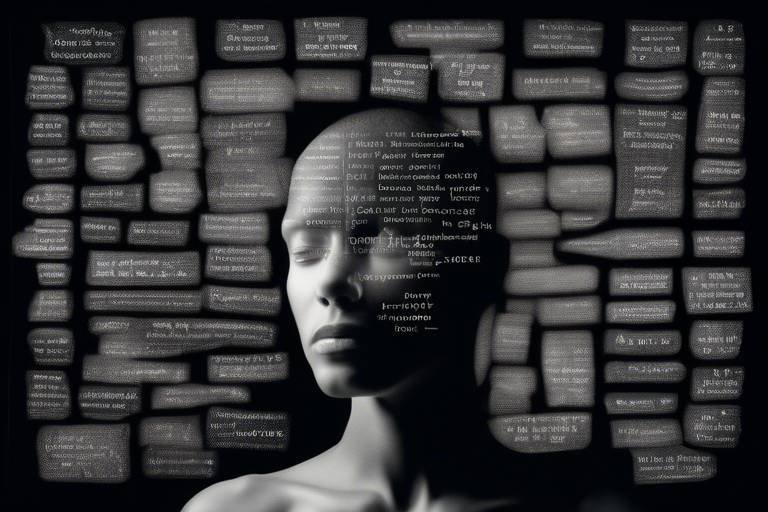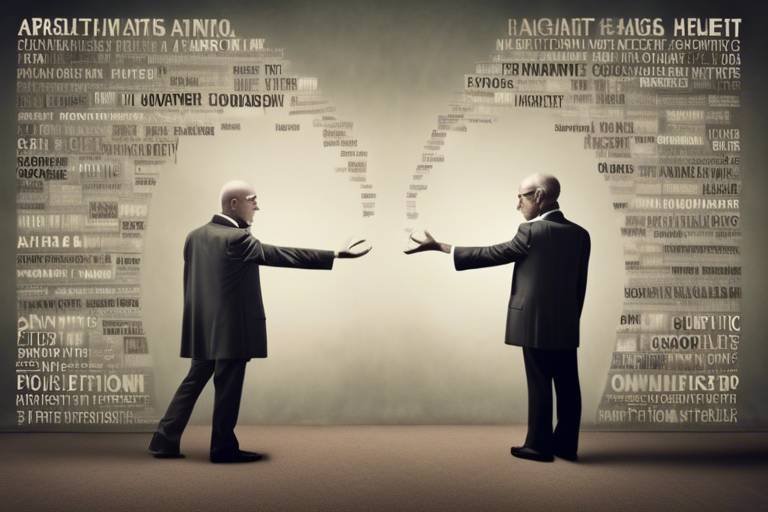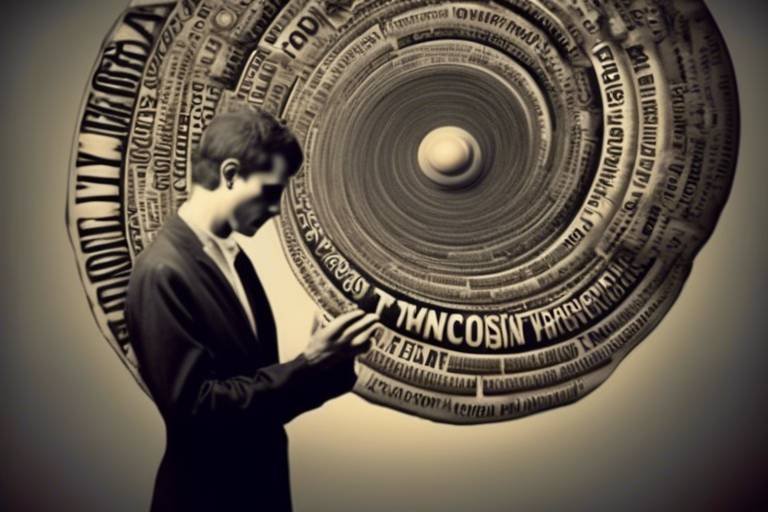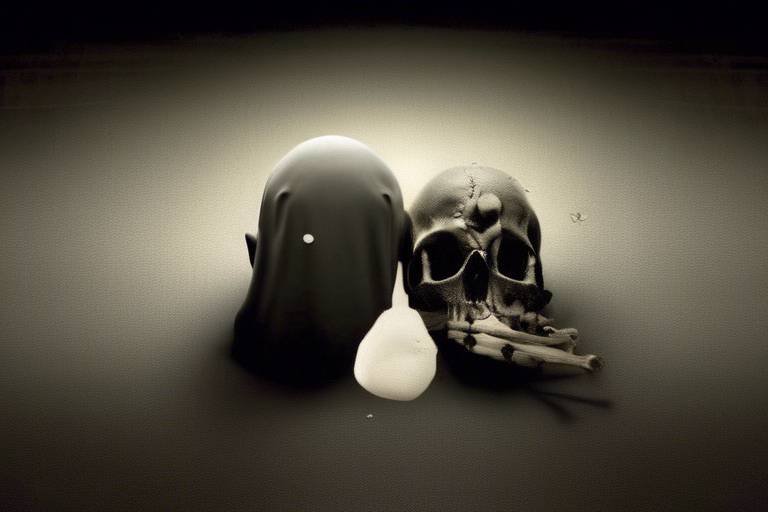The Power of Imagination in Shaping Consciousness
Imagination is not just a whimsical escape from reality; it's a powerful engine that drives our thoughts, emotions, and perceptions. Think of it as the canvas upon which our consciousness is painted, where every stroke represents a thought or feeling that can shape our reality. When we dive deep into the world of imagination, we unlock doors to possibilities that can transform our lives in profound ways. So, what exactly is this force that fuels our dreams and aspirations?
At its core, imagination is a complex cognitive process that allows us to create vivid mental images and scenarios. It’s the spark that ignites creativity, the tool we use to solve problems, and the lens through which we understand the world around us. Imagine being a child again, where every day was a new adventure filled with endless possibilities. This innate ability to envision different outcomes and scenarios is not just for kids; it’s a vital skill that we carry into adulthood. It shapes our decisions, influences our emotions, and ultimately, defines our experiences.
When we harness the power of imagination, we can begin to see the world not just as it is, but as it could be. This transformative ability allows us to set goals and dream big, paving the way for personal growth and self-discovery. It’s like having a magic wand that can help us overcome obstacles and unlock our potential. Imagine being able to visualize your success before it happens; this mental rehearsal can be incredibly motivating and empowering.
Moreover, the impact of imagination extends beyond the individual. It plays a crucial role in shaping collective consciousness. When people come together to share their dreams and visions, they create a tapestry of ideas and aspirations that can drive societal progress. This collective imagination is what fuels art, literature, and social movements, reflecting the shared beliefs and values of a community. It’s a beautiful dance of creativity that can inspire change and foster empathy among diverse groups.
In summary, imagination is a powerful tool that shapes our consciousness and reality. Whether it’s through personal growth or collective experiences, the ability to envision possibilities is what allows us to navigate the complexities of life. So, the next time you find yourself daydreaming or lost in thought, remember that you are engaging in a fundamental process that can lead to profound transformation.
- What is imagination?
Imagination is the cognitive ability to create mental images and scenarios that can influence thoughts, emotions, and perceptions.
- How does imagination contribute to personal growth?
Imagination allows individuals to envision possibilities, set goals, and overcome obstacles, leading to self-discovery and personal development.
- Can imagination impact emotional well-being?
Yes, harnessing imagination through visualization and creative expression can enhance emotional resilience and help manage stress and anxiety.
- How does collective imagination shape society?
Collective imagination influences cultural narratives and societal values, driving art, literature, and social movements that reflect shared beliefs.

The Nature of Imagination
Imagination is not just a whimsical escape; it is a dynamic cognitive process that enables us to create vivid mental images and scenarios. Think of it as a powerful tool in our mental toolbox, allowing us to explore the realms of possibility beyond our immediate reality. When we engage our imagination, we tap into a reservoir of creativity that fuels not only our artistic endeavors but also our ability to problem-solve and innovate. It is the bridge that connects our thoughts to our emotions, shaping how we perceive the world around us.
At its core, imagination is a complex interplay of various cognitive functions. It involves memory, perception, and even our emotional states. For instance, when you recall a cherished memory, your imagination helps to reconstruct the feelings and visuals associated with that moment. This process is crucial, as it allows us to learn from past experiences and apply those lessons to future challenges. In this way, imagination becomes a vital component of our personal development.
Moreover, imagination is not limited to individual experiences; it extends into our collective consciousness. It allows groups of people to share visions and ideas, fostering a sense of community and shared purpose. When we imagine together, we create cultural narratives that define our societies. This communal aspect of imagination can be seen in various forms of art, literature, and social movements that arise from a shared vision of what could be.
To illustrate the multifaceted nature of imagination, consider the following aspects:
- Creative Thinking: Imagination fuels creativity, enabling us to think outside the box and generate innovative solutions.
- Problem-Solving: It allows us to envision multiple scenarios and outcomes, helping us tackle challenges effectively.
- Emotional Connection: Imagination helps us connect with our emotions, facilitating self-awareness and empathy.
In essence, imagination is a powerful catalyst for change, both personally and collectively. It empowers us to dream, to aspire, and to create a reality that reflects our deepest desires and values. By understanding the nature of imagination, we can harness its potential to enrich our lives and the lives of those around us.
What is the definition of imagination?
Imagination is the mental ability to create images, scenarios, and concepts that are not immediately present to the senses. It allows for creative thinking and problem-solving.
How does imagination contribute to personal growth?
Imagination fosters self-discovery by enabling individuals to envision possibilities, set goals, and overcome obstacles, ultimately leading to personal development.
Can imagination improve emotional well-being?
Yes! Harnessing imagination through techniques like visualization and creative expression can enhance emotional resilience and help manage stress and anxiety.
How does collective imagination influence society?
Collective imagination shapes cultural narratives and societal values, influencing art, literature, and social movements that drive progress and change.

The Role of Imagination in Personal Growth
Imagination is not just a whimsical escape from reality; it is a powerful tool for personal growth that can transform our lives in profound ways. When we harness the power of our imagination, we unlock the ability to envision a future filled with possibilities. Think of it as a mental workshop where we can craft our goals and aspirations, shaping them into tangible realities. By imagining different scenarios, we can explore various paths and outcomes, which ultimately helps us in setting realistic and achievable goals.
One of the most fascinating aspects of imagination is its role in self-discovery. Through creative visualization, individuals can delve deep into their desires, fears, and motivations. This process often leads to significant revelations about one’s true self. For example, when someone imagines their ideal life, they may realize that their current career does not align with their passions. This awareness can prompt them to take actionable steps toward a more fulfilling path. It’s like holding a mirror up to your soul, reflecting not just who you are but who you could become.
Moreover, imagination helps in overcoming obstacles that may seem insurmountable. When faced with challenges, our minds can often spiral into negativity, but by using imaginative thinking, we can reframe these challenges as opportunities for growth. For instance, consider a student struggling with a difficult subject. Instead of succumbing to frustration, they can imagine themselves mastering the material, visualizing the steps they need to take to succeed. This shift in perspective fosters resilience and determination, enabling individuals to tackle problems head-on.
The journey of personal growth is often filled with setbacks and challenges. However, imagination can serve as a guiding light during these times. It allows us to envision a brighter future, motivating us to keep pushing forward despite the hurdles we encounter. Additionally, engaging in imaginative practices can boost our confidence. When we visualize ourselves succeeding in various endeavors, we start to believe in our capabilities. This newfound confidence can propel us to take risks and step outside our comfort zones, which is crucial for growth.
Furthermore, imagination plays a critical role in goal setting. When we take the time to imagine our future, we begin to outline the steps necessary to achieve our dreams. This process can be broken down into several key components:
- Envisioning Goals: Picture what success looks like for you.
- Identifying Obstacles: Consider what might stand in your way.
- Creating a Plan: Develop actionable steps to reach your goals.
- Visualizing Success: Regularly imagine achieving your goals to reinforce your commitment.
In essence, imagination is a catalyst for change. It empowers us to dream big and encourages us to pursue those dreams with vigor. By engaging in imaginative thinking, we can redefine our limitations and expand our horizons. This transformative process not only enhances our personal growth but also enriches our overall life experience. So, the next time you find yourself daydreaming, remember that you are not just wasting time; you are actively participating in your own evolution.
As we navigate through life, let’s embrace the power of imagination as a vital component of our personal development journey. It’s the key to unlocking our potential and realizing the dreams we hold dear.

Have you ever noticed how your mind can transport you to different places, allowing you to escape from reality for a moment? This incredible ability, known as imagination, plays a pivotal role in enhancing our emotional well-being. It's like having a mental playground where we can explore our thoughts and feelings without the constraints of the physical world. When we harness this power, we can significantly improve our emotional resilience, making it easier to manage life's ups and downs.
One of the most effective ways to utilize imagination for emotional well-being is through visualization techniques. Imagine picturing a serene beach, feeling the warmth of the sun on your skin, and hearing the gentle waves lapping at the shore. This type of visualization can create a sense of calm, helping to alleviate stress and anxiety. Research shows that engaging in such mental imagery can lower cortisol levels, the hormone associated with stress. By regularly practicing visualization, we can train our minds to respond more positively to challenging situations.
Moreover, creative expression is another avenue where imagination shines. Whether it's through painting, music, or written word, engaging in the arts allows us to explore our emotions in a safe and constructive way. For instance, when someone picks up a paintbrush, they are not just creating art; they are also giving voice to their inner experiences. This process can lead to profound healing and self-acceptance. The act of creating becomes a form of therapy, providing an outlet for emotions that might otherwise remain bottled up.
To illustrate the therapeutic benefits of creative expression, consider the following table that highlights different art forms and their emotional benefits:
| Art Form | Emotional Benefits |
|---|---|
| Painting | Enhances self-expression and reduces anxiety |
| Music | Improves mood and fosters connection |
| Writing | Facilitates reflection and emotional release |
In addition to creative arts, imagination also plays a crucial role in developing emotional intelligence. By visualizing various scenarios, we can better understand our reactions and the feelings of others. This practice not only enhances empathy but also equips us with the tools to navigate complex social situations. Imagine being able to foresee how your words might affect someone else; this foresight can lead to more compassionate interactions and healthier relationships.
Ultimately, the connection between imagination and emotional well-being is profound. By actively engaging our imagination through visualization and creative expression, we can cultivate a more positive mindset and improve our overall mental health. It's like having a secret weapon against life's challenges—one that allows us to envision a brighter future and develop the resilience needed to face whatever comes our way.
- How can I start using visualization techniques?
Begin by setting aside a few minutes each day to practice. Find a quiet space, close your eyes, and visualize a calming scene or a desired outcome. - What types of creative expression are best for emotional healing?
There is no one-size-fits-all answer, as it varies from person to person. Experiment with different forms of art, such as drawing, writing, or playing music, to find what resonates with you. - Can imagination really help with anxiety and stress?
Absolutely! Engaging your imagination through visualization and creative activities can significantly reduce stress levels and improve emotional resilience.

The Therapeutic Benefits of Creative Arts
Engaging in creative arts such as painting, music, and writing is not just a pastime; it’s a powerful tool for healing and self-exploration. When we immerse ourselves in artistic activities, we unlock a realm of possibilities that can significantly enhance our emotional well-being. Imagine picking up a paintbrush and letting your emotions flow onto the canvas—each stroke a release, each color a reflection of your inner world. This process allows individuals to express feelings that might be difficult to articulate verbally, creating a safe space for emotional exploration.
Moreover, creative arts serve as a bridge to connect with our deepest selves. For many, the act of creating can feel like a form of therapy. It offers an opportunity to confront and process complex emotions, leading to greater self-acceptance and understanding. When people engage in these activities, they often experience a sense of freedom and empowerment as they mold their experiences into tangible forms of expression. This transformation can be incredibly cathartic, allowing individuals to release pent-up emotions and find solace in their creativity.
Research has shown that participating in creative arts can lead to improved mental health outcomes. Art therapy, for instance, is a recognized therapeutic approach that utilizes artistic expression to help individuals cope with trauma, stress, and anxiety. Through guided sessions, participants can explore their feelings in a non-threatening environment, ultimately leading to emotional healing. Here’s a brief overview of the therapeutic benefits:
| Creative Art Form | Therapeutic Benefit |
|---|---|
| Painting | Enhances emotional expression and reduces anxiety. |
| Music | Promotes relaxation and improves mood. |
| Writing | Facilitates self-reflection and emotional processing. |
In addition to individual healing, creative arts can foster community connections. Group art projects or workshops can bring people together, creating a sense of belonging and shared experience. This collective engagement not only nurtures personal growth but also strengthens social bonds, making it a powerful avenue for community healing.
Ultimately, the therapeutic benefits of creative arts extend beyond the individual. They touch the lives of those around us, creating ripples of positivity and understanding. So, whether you’re picking up a paintbrush, strumming a guitar, or scribbling in a journal, remember that you are not just creating art; you are embarking on a journey of self-discovery and emotional healing.
- What types of creative arts are most beneficial for mental health?
While all forms of creative arts can be beneficial, activities like painting, music, and writing have shown significant therapeutic effects. - Can anyone benefit from art therapy?
Yes! Art therapy is designed for individuals of all ages and backgrounds, providing a safe space for expression and healing. - How often should I engage in creative arts for best results?
Regular engagement is key. Even short, consistent sessions can lead to significant improvements in emotional well-being.

Visualization Techniques for Mental Health
Visualization techniques have emerged as powerful tools for enhancing mental health, offering individuals a way to tap into their imagination and create positive mental imagery. Imagine being able to close your eyes and transport yourself to a serene beach, feeling the warmth of the sun on your skin and the gentle sound of waves lapping at the shore. This simple act can evoke feelings of calm and relaxation, providing a much-needed escape from the stresses of everyday life.
At its core, visualization is about creating vivid mental images that can help you achieve specific goals or outcomes. Whether it's preparing for a big presentation, overcoming anxiety, or simply finding a moment of peace, visualization techniques can guide your mind towards a more positive state. Research has shown that when we visualize success, our brains often respond as if we have already achieved it, reinforcing our confidence and motivation.
There are various techniques that individuals can use to harness the power of visualization. Here are a few effective methods:
- Guided Imagery: This involves listening to a recorded session or following a script that leads you through a series of calming and uplifting images. It’s like having a personal tour guide for your mind!
- Vision Boards: Creating a visual representation of your goals using images, words, and symbols can serve as a constant reminder of what you want to achieve. Place it somewhere visible to keep your dreams alive.
- Mindfulness Visualization: This technique combines mindfulness with visualization, where you focus on your breath and then imagine a peaceful scene, allowing your mind to relax and let go of tension.
Incorporating these techniques into your daily routine can significantly improve your emotional well-being. For instance, spending just a few minutes each day practicing guided imagery can help reduce symptoms of anxiety and promote a sense of tranquility. Additionally, visualization can enhance focus and clarity, making it easier to tackle challenges that may arise in your personal or professional life.
Moreover, visualization can also be a powerful tool in therapy settings. Many therapists incorporate visualization exercises to help clients process emotions and visualize positive changes in their lives. This collaborative approach can lead to profound insights and breakthroughs, making the therapeutic process more effective.
In conclusion, visualization techniques offer a unique and effective way to enhance mental health and well-being. By utilizing the power of your imagination, you can create a more positive and fulfilling life, one mental image at a time. So, why not give it a try? Close your eyes, take a deep breath, and let your imagination take you to a place where you feel empowered, relaxed, and ready to face the world!
- What is visualization? Visualization is a mental technique that involves creating vivid images in your mind to achieve specific goals or enhance emotional well-being.
- How can visualization improve mental health? Visualization can help reduce anxiety, improve focus, and foster a positive mindset by allowing individuals to mentally rehearse desired outcomes.
- Do I need special training to practice visualization? No special training is required; anyone can practice visualization techniques by starting with simple exercises and gradually incorporating more complex imagery.

Imagination in Problem-Solving
When it comes to tackling challenges, imagination plays a pivotal role that often goes unnoticed. Think of imagination as the ultimate toolkit; it allows us to approach problems from various angles, fostering innovative solutions that might not be immediately apparent. Imagine you’re faced with a complex issue at work or in your personal life. Instead of getting bogged down by the details, tapping into your imagination can help you visualize potential outcomes and pathways. This process isn’t just about coming up with wild ideas; it’s about engaging in a mental exercise that can lead to practical solutions.
Consider this: when we allow ourselves to dream, we create a mental space where possibilities abound. This is especially crucial in problem-solving. When you encounter a roadblock, your mind can often become a prison of limitations. However, by using your imagination, you can break free from these constraints. You might find yourself thinking, “What if I approached this issue differently?” or “What are the alternative methods I haven’t considered yet?” These questions can open doors to innovative solutions.
Moreover, imagination encourages collaboration. When brainstorming with others, the collective imagination can lead to breakthroughs that an individual might not achieve alone. Picture a team gathered around a table, tossing around ideas like a game of catch. Each person’s unique perspective adds to the pool of possibilities, creating a rich tapestry of potential solutions. This collaborative aspect of imagination not only enhances creativity but also fosters a sense of community among team members.
Here’s a simple breakdown of how imagination enhances problem-solving:
- Flexibility: It allows for thinking outside the box, leading to diverse solutions.
- Visualization: Helps in picturing the problem and potential solutions, making them more tangible.
- Collaboration: Encourages teamwork and the sharing of ideas, resulting in a richer solution set.
Incorporating imagination into problem-solving doesn’t just apply to personal dilemmas; it’s also crucial in professional settings. Companies that foster a culture of imaginative thinking often see enhanced innovation and productivity. For instance, tech giants like Apple and Google encourage their employees to think creatively, leading to groundbreaking products and services that have changed the world. This is a testament to the power of imagination in fostering environments where problem-solving thrives.
In summary, imagination is not just a whimsical notion; it is a powerful ally in the realm of problem-solving. By embracing imaginative thinking, we can unlock new pathways to solutions, enhance collaboration, and ultimately, transform challenges into opportunities for growth and innovation.
- How can I improve my imaginative thinking? Engage in activities that stimulate creativity, such as brainstorming sessions, creative writing, or even daydreaming.
- Can imagination really lead to practical solutions? Absolutely! Many successful innovations stem from imaginative thinking that visualizes potential outcomes.
- What role does collaboration play in imaginative problem-solving? Collaboration enhances the diversity of ideas, leading to a richer pool of solutions and fostering a sense of community.

The Collective Imagination of Society
The collective imagination of society is a fascinating phenomenon that shapes our cultural narratives and societal values. It’s like a vast tapestry woven from the dreams, fears, and aspirations of countless individuals. Just as a single thread contributes to the overall design, each person's imagination plays a crucial role in forming the collective consciousness. This shared imagination influences everything from art and literature to social movements, reflecting the beliefs and desires that drive progress and change.
Think about it: when we gather around a campfire, sharing stories and ideas, we tap into a collective well of creativity that transcends individual experiences. This communal imagination can ignite powerful movements, inspire artistic masterpieces, and even shift societal norms. For instance, consider how the civil rights movement in the United States was fueled by the collective imagination of activists who envisioned a world where equality and justice prevailed. Their dreams of a better future resonated with many, sparking a wave of change that transformed society.
Moreover, the collective imagination is not static; it evolves over time. As we face new challenges and opportunities, our shared visions adapt and grow. The advent of technology has only amplified this phenomenon, allowing ideas to spread like wildfire across the globe. Social media platforms serve as modern-day campfires, where individuals can share their thoughts and connect with others who share similar dreams. This interconnectedness fosters a sense of community and encourages the exchange of ideas, propelling societal change.
In the realm of art and literature, the collective imagination takes on a life of its own. Artists and writers often draw inspiration from the world around them, reflecting the hopes and fears of their communities. They serve as mirrors, capturing the essence of societal values and aspirations. For instance, the surrealist movement in art challenged conventional thinking and invited viewers to explore the depths of their imagination, ultimately reshaping cultural perceptions of reality.
Furthermore, the power of collective imagination is evident in social change initiatives. Visionaries and activists harness their creativity to envision solutions that challenge the status quo. They paint a picture of a future where justice, equality, and sustainability thrive. This imaginative thinking is vital for addressing pressing global issues, such as climate change and social inequality, as it encourages innovative approaches to problem-solving.
To illustrate the impact of collective imagination on society, consider the following table that highlights some key examples:
| Movement/Art Form | Impact on Society | Key Figures |
|---|---|---|
| Civil Rights Movement | Promoted racial equality and justice | Martin Luther King Jr., Rosa Parks |
| Surrealism | Challenged traditional perceptions of reality | Salvador Dalí, André Breton |
| Environmental Movement | Raised awareness about climate change and sustainability | Greta Thunberg, Al Gore |
In conclusion, the collective imagination of society is a powerful force that shapes our reality. It fosters creativity, drives social change, and reflects our shared values and aspirations. By embracing our imaginative capabilities, we can contribute to a brighter future for ourselves and generations to come. So, let’s continue to dream, share, and inspire one another as we navigate the ever-evolving landscape of our collective consciousness.
- What is collective imagination? Collective imagination refers to the shared thoughts, dreams, and aspirations of a group or society that shape cultural narratives and values.
- How does imagination influence social change? Imagination allows individuals to envision a better future, inspiring movements that challenge the status quo and promote justice and equality.
- Can art reflect collective imagination? Absolutely! Art and literature serve as platforms for expressing the collective imagination, capturing the hopes and fears of society.

Imagination in Art and Literature
Art and literature are not just forms of expression; they are the very lifeblood of collective imagination. Through these mediums, societies can articulate their dreams, fears, and aspirations, creating a tapestry of shared experiences that resonate across generations. Imagine walking through a gallery filled with paintings that evoke emotions you never knew existed or reading a novel that transports you to a world beyond your own. This is the power of imagination in art and literature—it allows us to transcend our immediate realities and explore the depths of human experience.
When artists pick up their brushes or writers put pen to paper, they engage in a profound act of creation. They draw from their own experiences, emotions, and insights, but they also tap into the collective consciousness of their communities. This interplay between individual creativity and societal influence leads to works that not only reflect the time in which they were created but also shape the future. For example, consider how the works of authors like George Orwell or artists like Picasso challenged societal norms and ignited conversations about freedom, identity, and justice.
Furthermore, art and literature serve as a mirror to society, revealing the underlying currents of thought and feeling that often go unspoken. They can highlight social injustices, celebrate cultural heritage, and provoke critical thinking. Through imaginative storytelling or evocative imagery, creators can foster empathy and understanding among diverse communities. For instance, a powerful painting can evoke feelings of sorrow, joy, or anger, prompting viewers to reflect on their own lives and the world around them.
Additionally, the collaborative nature of art and literature enhances the imaginative process. Artists and writers often draw inspiration from one another, creating a rich dialogue that fuels innovation. This can be seen in movements like the Renaissance, where the blending of artistic styles and literary forms led to groundbreaking works that continue to inspire today. In this way, imagination becomes a communal experience, allowing individuals to connect and share their visions of what could be.
In conclusion, imagination in art and literature is not merely an individual endeavor; it is a collective journey that shapes our understanding of ourselves and the world. By engaging with these forms of creativity, we open ourselves up to new perspectives and possibilities, ultimately enriching our lives and the lives of those around us.
- How does imagination influence art and literature?
Imagination fuels creativity, allowing artists and writers to explore new ideas and express complex emotions. It enables them to create works that resonate with audiences on a deeper level.
- Can art and literature change societal perspectives?
Yes, they can. Through storytelling and visual representation, art and literature can challenge existing beliefs and inspire social change, encouraging audiences to reflect on their values.
- What role does collective imagination play in cultural movements?
Collective imagination fosters unity and shared purpose, allowing communities to envision and work towards common goals, such as social justice and equality.

Imagination and Social Change
Imagination is not just a whimsical escape from reality; it is a powerful catalyst for social change. When we think about the world around us, we often find ourselves grappling with its complexities and challenges. But what if we could envision a better future? This is where the magic of imagination comes into play. It allows activists, visionaries, and everyday individuals to dream beyond the constraints of the present, to see possibilities where others see obstacles. Imagine a world where everyone has equal rights, where poverty is eradicated, and where environmental sustainability is a priority. These visions, born from the depths of our imagination, can ignite movements that transform society.
Throughout history, many significant social changes have been fueled by imaginative thinking. For instance, the civil rights movement in the United States was driven by leaders who envisioned a society free from racial discrimination. Figures like Martin Luther King Jr. didn’t just advocate for change; they painted vivid pictures of a future where equality prevailed. His famous “I Have a Dream” speech is a prime example of how imagination can mobilize people, providing them with a shared vision that transcends their immediate circumstances.
Moreover, imagination enables us to challenge the status quo. It invites us to ask rhetorical questions like, “What if we could redesign our education system to be more inclusive?” or “How can we create cities that prioritize mental health and community well-being?” These questions are not mere fantasies; they are the seeds of innovation that can lead to real-world solutions. When we dare to imagine differently, we open the door to discussions that can lead to tangible policy changes and social reforms.
In today's digital age, the role of imagination in social change has only expanded. Social media platforms provide a stage for creative expression and collective dreaming. Activists can share their visions with a global audience, rallying support and inspiring action. For instance, campaigns like #MeToo and Black Lives Matter have utilized imaginative storytelling to highlight injustices and mobilize communities. These movements remind us that our shared dreams can unite us in powerful ways, pushing for change that resonates on a global scale.
As we navigate an increasingly complex world, the ability to imagine alternative futures becomes even more crucial. It empowers individuals to become agents of change, fostering resilience and adaptability in the face of challenges. By harnessing our collective imagination, we can challenge oppressive systems, advocate for equality, and inspire future generations to dream boldly. Ultimately, the power of imagination lies in its ability to transform not just our thoughts, but our very reality. So, let’s dream big, envision a brighter future, and take the necessary steps to make it a reality.
- How does imagination contribute to social movements?
Imagination allows individuals to envision a better future, inspiring collective action and providing a shared vision that motivates change. - Can imagination be taught?
Yes, imagination can be nurtured through creative practices, open-minded discussions, and encouraging innovative thinking in education. - What role does art play in social change?
Art serves as a powerful medium for expressing collective imagination, allowing communities to share their stories and inspire empathy.
Frequently Asked Questions
- What is the role of imagination in personal growth?
Imagination is a powerful tool for personal growth. It allows individuals to envision their goals and aspirations, helping them to navigate obstacles and unlock their potential. By imagining possibilities, people can cultivate a clearer sense of direction and purpose in their lives.
- How can imagination improve emotional well-being?
Harnessing imagination can significantly enhance emotional resilience. Techniques like visualization and creative expression serve as therapeutic tools, enabling individuals to manage stress, anxiety, and depression. By imagining positive outcomes, one can foster a more optimistic mindset and improve overall mental health.
- What are some effective visualization techniques?
Effective visualization techniques include creating mental images of desired outcomes, engaging in guided imagery, and practicing mindfulness meditation. These methods can help reduce anxiety, improve focus, and promote a sense of calm, allowing individuals to better handle life's challenges.
- How does imagination contribute to problem-solving?
Imagination plays a critical role in innovative thinking and problem-solving. It enables individuals to brainstorm multiple solutions to challenges, fostering creativity and adaptability. By thinking outside the box, people can approach problems from different angles and find effective resolutions.
- What impact does collective imagination have on society?
Collective imagination shapes cultural narratives and societal values. It influences art, literature, and social movements, reflecting shared beliefs and aspirations. This collective creativity drives progress and change, inspiring communities to work towards a better future.
- How does imagination influence art and literature?
Art and literature serve as powerful platforms for collective imagination. They allow societies to express their dreams, fears, and hopes, fostering empathy and understanding among diverse communities. Through these creative forms, artists and writers can inspire change and provoke thought.
- Can imagination drive social change?
Absolutely! Imaginative thinking is vital for envisioning a better future. Activists and visionaries leverage their imagination to challenge the status quo, inspiring movements that promote social justice and equality. By imagining a different world, they motivate others to join in the quest for change.




